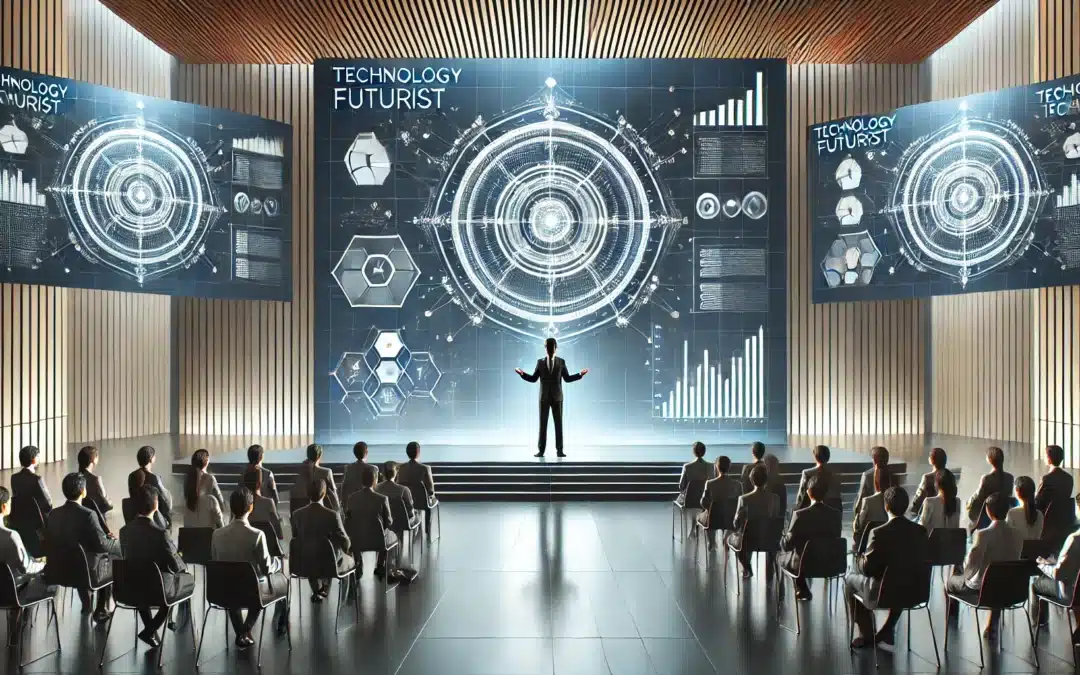The Amazon Leadership Principle “Customer Obsession” is a fundamental driver of successful Big Bets. Leaders who start with the customer and work backward ensure that every decision, action, and investment is focused on solving real customer needs. In the high-stakes world of Big Bets, this principle helps guide strategic direction and prioritization, ensuring that initiatives are aligned with creating maximum value for customers. By obsessing over customers rather than competitors, leaders can identify unique opportunities for innovation that set their Big Bets apart and deliver transformative results.
In the context of Big Bets, Amazon customer obsession also plays a critical role in managing calculated risks. When leaders prioritize understanding and anticipating customer needs, they are better equipped to take informed risks that are more likely to result in success. Rather than taking risks based on industry trends or competitor actions, customer-obsessed leaders focus on what truly matters—creating value for their customers. This approach not only helps mitigate unnecessary risks but also allows for more meaningful experimentation and innovation, as leaders are constantly testing and refining ideas based on customer feedback and insights.
Moreover, leaders who are obsessed with their customers work tirelessly to earn and maintain customer trust. In Big Bets, where the stakes are high and outcomes uncertain, building and keeping customer trust is essential for long-term success. By continually listening to customers and refining their approach to meet customer needs, leaders can ensure that their Big Bets stay relevant and impactful. Customer obsession fosters a relentless focus on delivering value, empowering leaders to take bold, calculated risks with the confidence that their initiatives are rooted in what matters most—the customer.
Leadership Principle #1– Amazon Customer Obsession
The Amazon Leadership Principle “Amazon Customer Obsession” is explained by Amazon as this:
Amazon Customer Obsession means starting with the customer, being deeply curious about the customer experience, and working backwards from a target customer experience. This involves understanding the customer’s desires, needs, and pain points so profoundly that the service or product delights the customer. This approach challenges traditional business models that begin with an idea for a product and then seek a market. Amazon flips this model, ensuring that the product fits the market and is precisely tuned to elevate the customer experience.
I was an early executive at Amazon and led the launch of the Amazon Marketplace business in 2002. I was also responsible for a business called Enterprise Services, where we ran the e-commerce infrastructure of other large retailers, including Target.com, Toys R Us, and NBA.com. In 2014, I wrote a book titled The Amazon Way, which has now had three editions, been translated into ten languages, and sold several hundred thousand copies globally.
Here is a modified version of Chapter 1 from The Amazon Way — Customer Obsession. (used with permission from rights holder, John Rossman)
Read more about The Amazon Way and other books by leading keynote speaker John Rossman HERE
Jeff Bezos’s focus on customers goes far beyond mere dedication—it borders on an extreme drive that has led to numerous intense outbursts or, more frequently, cutting remarks aimed at Amazon employees who fail to meet his high standards for customer service. This intense focus arises from Jeff’s remarkable talent for empathizing with customers, understanding their unspoken desires, and creating systems that fulfill those needs more effectively than anyone else.
This business philosophy is the essence of Jeff’s brilliance. Even before social media transformed the retail landscape with its expansive, transparent networks connecting companies, customers, potential buyers, and critics, before businesses like Zappos.com made exceptional customer service their cornerstone; and even before Jeff fully realized his vision for Amazon, he had deeply ingrained two fundamental truths about customer service:
- When a company makes a customer unhappy, they won’t tell a friend or two or three; they will tell many people, and
- The best customer service is no customer service—avoiding issues and solving the real customer need is far better.
What Amazon has learned since its inception emphasizes the importance of customer obsession. Firstly, innovation thrives when deeply considering the comprehensive customer experience and their needs. Secondly, focusing on customer obsession helps prevent bureaucracy, organizational silos, and blame-shifting.
Of course, a business model that completely eliminates the need for customer service is as unrealistic as a perpetual motion machine. However, early in the Internet revolution, Jeff recognized that online retail could elevate customer service standards. He understood that human intervention often posed the biggest risk to the customer experience. Consequently, he believed that the key to providing a seamless, enjoyable customer experience was to reduce human involvement through process innovation and technology.
Amazon still relies on human employees. Throughout this book, we will explore the strategies Jeff developed to hire, evaluate, and retain top talent. However, Amazon’s aim has always been to reduce the routine service tasks for its skilled employees, allowing them to focus on creating new ways to delight customers.
Jeff’s insight led to unconventional approaches. In the late 1990s, Amazon deliberately made it difficult to find the customer service number, which puzzled some observers who misinterpreted it as customer neglect. Customers soon realized that Amazon’s engineers had developed a robust technology that allowed them to address service requests almost instantly without human assistance. This wasn’t as challenging as it seemed. After all, 98 percent of customer inquiries at a retailer like Amazon are simply about tracking orders. An online tool that allows customers to follow their shipment from the warehouse to their front door eliminates the need for a large call center and the organizational friction it creates.
Jeff believed that people don’t like to talk to customer service representatives. He was right. All he had to do was provide the data and tools and retrain customers to answer their own questions. Now customers have come to expect and demand effortless self-service customer care technology
The best customer service works without effort—producing incredible benefits for customers and the company that serves them. Take, for example, Amazon’s revolutionary Free Shipping program, launched in November 2000. It was originally called the “Free Super Saver Shipping Offer” and was good only for orders over $100. Instead of paying for advertising, Amazon pumped its money into free shipping, which resulted in customer-driven word of mouth, the world’s most effective (and cheapest) form of advertising. This created a virtuous cycle: by sacrificing short-term financials for customer benefit, the strategy drove long-term competitive and financial benefit. “In the old world, you devoted 30 percent of your time to building a great service and 70 percent of your time to shouting about it,” Jeff explained. “In the new world, that inverts.”
At the time, free shipping seemed like a wildly radical and risky strategy. Now, customers expect it. In fact, most people assume that companies will pay for return shipping as well—just one of the ways Amazon has raised the bar on customer service for countless businesses.
Durable Customer Needs
Amazon’s strategy includes great pricing on virtually every product it sells. But the strategy is not just about price. A wide selection and fast, convenient availability with great delivery and service are equally critical elements of long-term customer needs. Price, selection, and availability are the three durable and universal customer desires that Amazon considers its holy trinity.
Offer everything, get it cheaper, and make it more easily available. Fashions, tastes, product types, and form factors change, but the holy trinity won’t. That’s why Jeff Bezos embraced this strategy from the earliest days of Amazon. Here’s an excerpt from his very first letter to Amazon’s shareholders in 1997:
“Our focus has been on offering our customers compelling value from the beginning. We realized that the Web was, and still is, the World Wide Wait. Therefore, we set out to offer customers something they simply could not get any other way and began serving them with books. We brought them much more selection than was possible in a physical store (our store would now occupy 6 football fields) and presented it in a useful, easy-to-search, and easy-to-browse format in a store open 365 days a year, 24 hours a day. We maintained a dogged focus on improving the shopping experience and in 1997 substantially enhanced our store. We now offer customers gift certificates, 1-Click (SM) shopping, and vastly more reviews, content, browsing options, and recommendation features. We dramatically lowered prices, further increasing customer value. Word of mouth remains the most powerful customer acquisition tool we have, and we are grateful for the trust our customers have placed in us. Repeat purchases and word of mouth have combined to make Amazon the market leader in online bookselling.”
Price, selection, and availability—all the elements of the holy trinity are there. Incidentally, Jeff has attached this original 1997 shareholder letter to the back of every shareholder letter he has written since. And he repeats the same mantra every chance he gets. In 2004, I accompanied Jeff when he gave a talk to the leadership team at Target, the large retailer. Jeff talked about “durable customer needs” and explained that if you define your business around a set of durable customer needs, you can have a better orientation as to how to grow and innovate. For Amazon, Jeff said that he could “never imagine a world where a customer wants less selection, higher prices, or slower delivery.” He went on to say that these durable customer needs were how he saw Amazon continuing to grow and innovate. Guess what? More than 25 years later, these are still the primary areas of investment and innovation in the Amazon retail business.
Let’s take a closer look at the three elements of the holy trinity and consider how Amazon has built its business around each one.
Price. Amazon’s low-price strategy is well documented.
For decades, Jeff has proven that he is willing to make less on an item—or an entire line of products—in the short term to guarantee the long-term growth of the business. Yet Jeff’s obsession with pricing knows no bounds. Here’s an example:
During my years at Amazon, everyone understood that our goal was to be an everyday, low-price leader. To do that, we had to make sure our prices matched those of our image competitors—Walmart, Best Buy, and Target. During one S-Team meeting, someone opined, “If the retailer with the lowest price doesn’t have the item in stock, then we shouldn’t match the price. Why bleed the margin for no reason?”
Jeff immediately objected, pointing out how this might backfire. Suppose customers saw that our price was higher. In that case, they’d grudgingly buy an item unavailable elsewhere, but the transaction would leave a bitter taste in their mouth that they would associate with Amazon. Jeff rejected the idea of protecting our profit margin, emphasizing that what really mattered was what customers were thinking.
Of course, a low-margin pricing strategy is constantly under siege. Most recently, the pressure has been coming from some very unlikely competitors—brick-and-mortar retailers. An analyst for BB&T Capital Markets made waves in the media when he reported that the prices charged by retailer Bed, Bath & Beyond on a representative “basket” of thirty items had fallen from 9 percent higher than those charged by Amazon (in early 2012) to 6.5 percent lower than Amazon’s (as of August 2013).4 Other traditional retailers, such as Best Buy, are offering guarantees to match Amazon’s pricing. Thanks to factors such as falling real estate prices, the gradual leveling of the sales tax playing field between online and offline retailers, and the greater leeway to reduce prices among old-school merchants with healthy profit margins (like those currently enjoyed by Bed, Bath & Beyond), Amazon’s once-huge price advantage over brick-and-mortar retailers is fading. How Amazon will respond to this intensified competition is one of the big questions for the company’s future.
Selection. Amazon Becoming the Everything Store
From the beginning, Jeff Bezos’s goal was to make Amazon a source for virtually anything a customer might want to buy. This started with an unmatched assortment of books and other media products and expanded to include a practically unlimited array of goods.
Of course, trying to become is far from easy. When Bezos couldn’t figure out how to organically scale Amazon to provide the vast assortment of products he envisioned, the idea of the third-party marketplace was formed. The world was full of people already selling everything under the sun. Jeff hired me to figure out a way to cohabitate with them under the umbrella of the Amazon brand. Long story short, we eventually figured out how to sell everything without carrying a huge load of inventory or the risk that goes with it.
Today, the scale at which Amazon operates is nearly infinite, providing a richness and variety of customer experience that would have seemed impossible a few years ago. What are you looking for? Uranium? Check. A fresh, whole rabbit? Sure. Bacon-shaped Band-Aids? Roger that. If you can imagine it, chances are it can be purchased on Amazon. And the more out-of-the-ordinary products customers discover when they browse Amazon’s site, the more they make it their default location for any shopping they want to do, making the Amazon flywheel spin even faster.
The Andon Cord and Customer Obsession
The Andon Cord concept is not an Amazon original; it originates from Japanese lean manufacturing, particularly in the automotive sector. Imagine working at a bustling Toyota assembly plant, and you find that the part you’re installing is faulty or doesn’t fit. You would immediately pull the Andon Cord, halting the assembly line and prompting an inspection to quickly address the defect. Consultant Todd Wangsgard explains, “The Andon Cord is literally a cord that workers can pull—one they should pull—whenever something in the manufacturing process goes wrong, compromising product quality or safety. The line stops immediately.”
Amazon’s adaptation of the Andon Cord began with a discussion about a customer care issue during a weekly business review. The problem stemmed from errors made by the retail team causing issues for the customer care team. As the head of customer care put it, “When the retail team provides incorrect data or inaccurate product descriptions, customers are disappointed with their purchases, leading them to call customer care, resulting in the hassle of processing refunds.”
Despite assigning tasks to the retail group to resolve the issue, customer feedback indicated no improvement weeks later. Frustrated, the customer care team implemented their own version of the Andon Cord. When customers complained about a product, customer care removed that product from the website and notified the retail team, essentially saying, “Fix the defect, or you can’t sell this product.” In retail, halting product sales is highly disruptive, similar to stopping an automotive assembly line. Nevertheless, Jeff Bezos fully supported this method, stating, “If you retail guys can’t get it right, you deserve to be punished.”
The Andon Cord story exemplifies Amazon’s deep commitment to customer satisfaction and the importance of considering internal customers. When launching the third-party marketplace, I struggled to get internal teams to treat third-party sellers with the same care as our shoppers. For my team, these sellers were customers deserving the same respect as website shoppers. The Andon Cord mechanism ensures attention to both internal and external customer needs by halting business operations until issues are resolved. Amazon even has roles such as “Senior Product Manager, Andon Cord,” responsible for creating cross-organizational processes to detect and pull the Andon Cord when defects arise. This role involves real-time monitoring to identify errors and ensure teams address them promptly.
Innovation and The Voice of the Customer
In the early days of Amazon, Jeff Bezos would bring an empty chair into meetings as a constant reminder to his team that the customer, even though she might not be physically present in the room, still needed to be constantly acknowledged and heard. But Amazon also takes unusual steps to ensure that the literal voice of the customer is heard throughout the organization. The goal is to ensure that customer feedback is used to identify, examine, and fix root problems in Amazon’s operations. Jeff requires all of his managers to attend two days of call-center training each year. In fact, if you dial into the call center on just the right day, you may even get Jeff himself on the line. In theory, the resulting sense of understanding and empathy for the customer trickles up into the very highest echelons of the organization.
Of course, in the age of blogs, tweets, and Facebook posts, a single customer complaint that goes viral can have a devastating impact. Therefore, Jeff has invested millions in constructing systems that monitor the online feedback Amazon receives from its customers. For example, during my time heading up the third-party marketplace, we established an internal email system that facilitates and monitors conversations with customers and retailers, uses metrics to track customer complaints about third-party retailers, and implements a fulfillment capability (Fulfillment by Amazon), which lets merchants easily leverage Amazon’s distribution channels.
Jeff’s shareholder letter dated April 2013 describes another example of how the customer experience drives innovation at Amazon through the Amazon Leadership Principle of Customer Obsession:
We build automated systems that look for occasions when we’ve provided a customer experience that isn’t up to our standards, and those systems then proactively refund customers. One industry observer recently received an automated email from us that said, “We noticed that you experienced poor video playback while watching the following rental on Amazon Video On Demand: Casablanca. We’re sorry for the inconvenience and have issued you a refund for the following amount: $2.99. We hope to see you again soon.” Surprised by the proactive refund, he ended up writing about the experience: “Amazon ‘noticed that I experienced poor video playback…’ And they decided to give me a refund because of that? Wow…Talk about putting customers first.”7
The company’s history is studded with innovative triumphs driven by customer obsession. Pushing the publishing industry to make books available electronically provided readers with instant gratification at lower prices. Providing unlimited next-day delivery (the Amazon Prime loyalty program) for $79 (now $99) a year drove revenue by drastically reducing the friction involved in online shopping. And Amazon Web Services, the category leader and chief innovator in the field of cloud computing, was based on the idea of offering business customers the same sophisticated online infrastructure technology that Amazon has developed for itself.
Here is a closer look at some of Amazon’s biggest customer-driven innovation hits:
Look Inside the Book.™ In 2001, Amazon launched this program based on a simple concept: to emulate the bookstore experience by allowing Amazon surfers to look at pages inside the book before buying. Of course, this required Amazon to house book content in online form on their site, which raised some questions about whether this would expose book content to piracy. Publishers were worried and skeptical. The program would also be very costly. Each book would have to be scanned digitally and indexed, a huge logistical challenge. Jeff gave the go-ahead for a large-scale launch, recognizing that this was the only way to see whether it would go over with Amazon’s 43 million active customer accounts. The feature debuted with an astonishing 120,000-plus books.
Amazon Prime. Though many people think of Amazon Prime as a shipping program, it’s really the world’s best loyalty program. When we were coming up with this concept, Jeff referenced airline credit cards and how you never feel like you’re being rewarded when you’re using one. He wanted to create a loyalty program that provided very tangible benefits. With Prime, the customer is very clear on how they’re being rewarded for shopping with Amazon. The benefits started with free two-day shipping; now, members also receive monthly e-book rentals on Kindle devices and can stream selected movies and television shows for no extra charge beyond Prime membership annual fees.
Since its inception in February 2005, Amazon Prime has become an increasingly important part of Amazon’s broader strategy to retain customers and get them to spend more time and money on its services and products. Because they pay $119 per year, Amazon Prime members use the service more frequently. And Amazon Prime continues to up customer expectations. Amazon may soon introduce free same-day delivery in certain urban areas.
The Path to Customer Obsession
Ultimately, Amazon’s strategy to maintain its position as the world’s most customer-focused company heavily relies on another leadership principle: having a bias for action. Jeff Bezos rarely responds to competitors’ moves. Instead, he believes it’s better to introduce new innovations based on customer needs and experiences, compelling competitors to respond—even if those innovations face challenges or fail.
“If you’re competitor-focused, you have to wait until there is a competitor doing something,” Jeff explains. “Being customer-focused allows you to be more pioneering. There are two ways to extend a business. Take inventory of what you’re good at and extend out from your skills. Or determine what your customers need and work backward, even if it requires learning new skills.” This focus on being “customer-focused” rather than “competitor-focused” is evident throughout the organization to this day. From my extensive experience with the AWS business, it’s clear that they rarely criticize or even assess a competitor’s product, especially in front of a customer, preferring to leave such evaluations to others unless absolutely necessary.
Becoming a customer obsessed team and business has several benefits — extreme ownership, curiosity, attention to detail among others. They also are more rewarding and fun to work at, because the mission is always front-and-center. But you can’t make a great business with *just* customer obsession. That’s why there are sixteen leadership principles at Amazon. We are going to explore all of them in related posts. Amazons Leadership Principles are the key to learning from Amazon.
Onward!
John
John Rossman is a writer, leadership and strategy advisor, and keynote speaker.Have him inspire and teach your team.
Learn more at https://bit.ly/RossmanPartners.
Read his substack newsletter at https://bit.ly/DigitalLeader-PLTD.
Connect with John at LinkedIn: https://www.linkedin.com/in/john-rossman/










